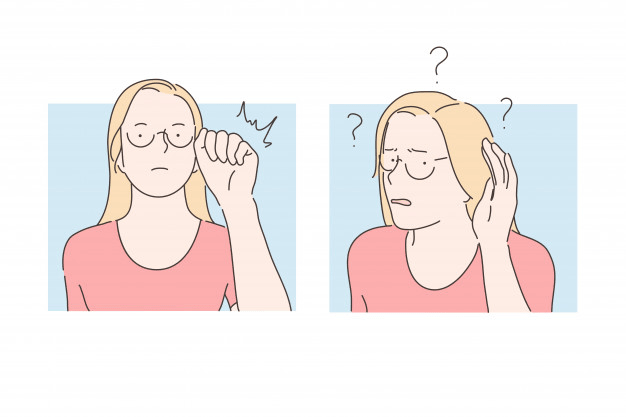Radical Listening: Heal Yourself and Your Loved Ones

There is a very old and common question that made me go WOW when I was little! So, I will take a moment and ask you the same question.
Ever wondered why we have one mouth and two ears?
So that we can talk less and listen more to what the other person has to say. After all, hearing is healing.
But, sad enough “being all ears” has come down to a mere phrase. Even if we choose to listen to the other person we let filters come into play. That’s a big reason why hearing is no more healing for us, as the silence in listening goes missing. We are too busy talking and advising the other person!
Thankfully, a solution to this problem does exist that ensures hearing heals and “being all ears” is not just a phrase. This listening practice is known as Radical Listening!
Questions popping in your head? We will answer them all. Continue reading further…
What is Radical Listening?
Listening with curiosity and without defensiveness is the hallmark of Radical Listening.
Rita explains, “Radical listening allows for equality between speaker and listener that gives voice to the tale.”
This form of listening helps us accept the silent moments in a conversation, lets us pay undivided attention, and helps us heal. Some studies also define it as being a vessel for your partner, to be sympathetic, and reside at the moment non-judgmentally.
Why Practice Radical Learning?
If you are wondering why you even need to practice radical listening, these benefits associated with it might interest you:
- Radical listening helps in healing yourself and the person being heard.
- Radical listening makes you more empathetic in life.
- Radical listening helps you build connections across differences.
- Radical listening makes you practice patience in your life.
- Radical listening helps you practice self-love and share that love with others as well.
- Radical listening promotes creative thinking as it gives you a moment to pause and think over.

The 3 C’s of Radical Listening:
To practice radical listening in your life you have to keep a special note of the 3 C’s that are at the heart of it. This includes,
1. Curiosity
Don’t assume what the other person has to say! Be curious as to what they have to tell, what will be the purpose of this conversion, what opinions will be shared, and other such things. Remember you are looking forward to hearing and understanding the other person.
2. Courage
Have the courage to dive deep into the conversation and explore what you never thought of. Don’t be judgmental of what the other person has to convey and just listen to it with an open heart and be all ears.
3. Consciousness
Don’t let your emotions take you away from the moment and dwell you in the past or swing you in the future. Be aware, be in the moment, otherwise the first 2 C’s of radical listening will come to a complete fail! If you will be conscious of what the other person is communicating, you will be able to give a proper response to them. So, make sure you are alert,

How to Make Radical Listening a Part of Your Life?
Radical listening can be made a part of your life only through practice! Now, everyone practices it differently as there is no 101 radical listening rule book to follow. But, there are is a 5 step formula that you can begin with:
STEP 1: Focus Actively
Focus on the details that the other person is communicating. Make sure your body language also gives the same message. Making silent eye contact for a minute is a helpful way to give the message of being attentive.
STEP 2: Be Aware of Your Signals
Show them that you are interested in what they have to convey with your body language. This can be done by nodding your head, leaning forward while listening to them, and more such ways.
STEP 3: Take A Pause
Radical listening is a judgment-free act of listening. So, if at any point you feel like you are losing track or judgment is going to swipe in just take a pause. Take a pause and think.
STEP 4: Don’t Sell
You can share ideas with the other person and listen to their response on the same. You don’t have to prove your ideas right here and don’t think of selling them. Just listen to their views.
STEP 5: Confirm and Paraphrase
To cancel out any misunderstandings it is advised that you summarize what you understood and convey the same to them. This way you give two important messages, first, you are listening and second, you are ensuring that there is no room for misunderstanding.

Exercise to Practice Radical Listening
If you are going to have a conversation with someone right after reading this blog, here is a small exercise that you use to practice radical listening.
- Prep your mind by telling it that you are communicating to understand the other person and not to win it. Then enter into the conversation.
- Be interactive, attentive, and curious. Ask questions and keep your distractions away.
- If overwhelming emotions swipe in remind yourself “You have to listen, you don’t have to be necessarily right or a winner here.”
- If your opinions don’t match, ask them, “Tell me your opinion on this. I really want to know more about it from you.”
- If there are silent moments, consider them as healing points, as creative points, as calming points, and as thinking points.
- Paraphrase what you listened and heard, to cancel out any misunderstandings.
A Mini Guideline to Practice Radical Listening:
6 simple and important rules:
- Discard the usage of the word “but.”
- Ask questions.
- Take pauses.
- Don’t let judgments color your pictures.
- Speak for something that is bothering you.
Still, have questions in your head?
You can use these videos on radical listening to understand it better:
1. The Radical Listening Project: Healing Social and Political Divides | Kathryn Thomson | TEDxJIBC
2. Radical Listening – Explained
3. Listening is Radical | Chanel Lewis | TEDxDirigo
Time for you to turn listening into therapy…
Do share your experience with practicing radical listening in your life with us.
You May Like These Also:
Active Listening and its Benefits





















Great content! Keep up the good work! Definitely going to share with my friends and family members